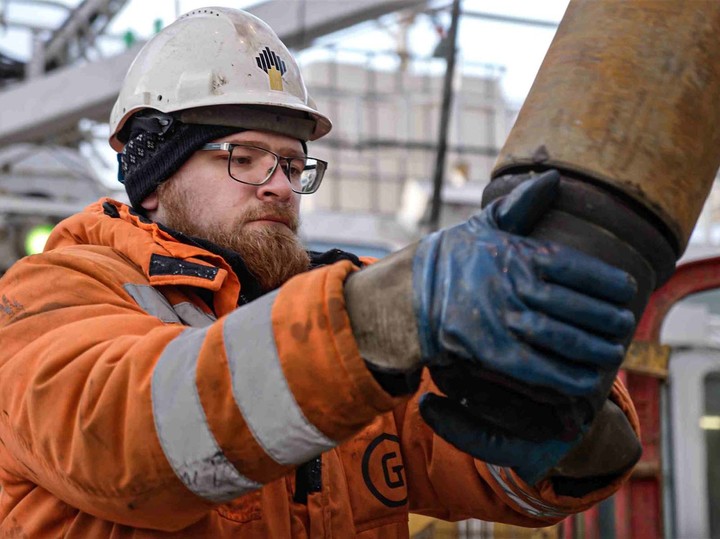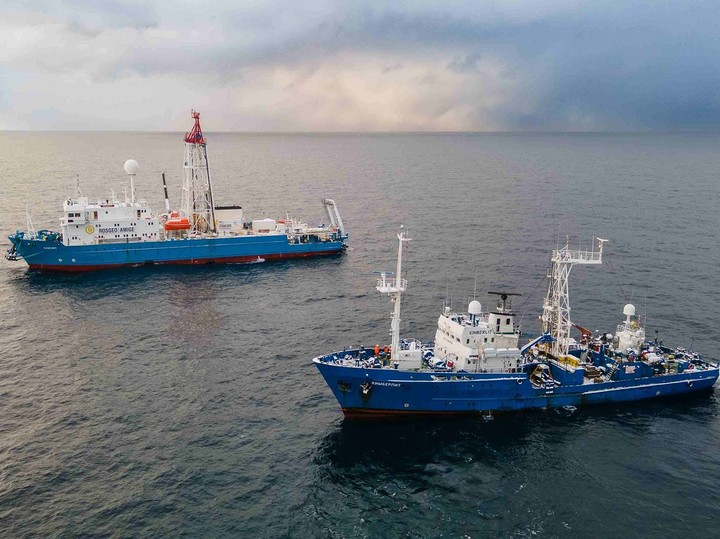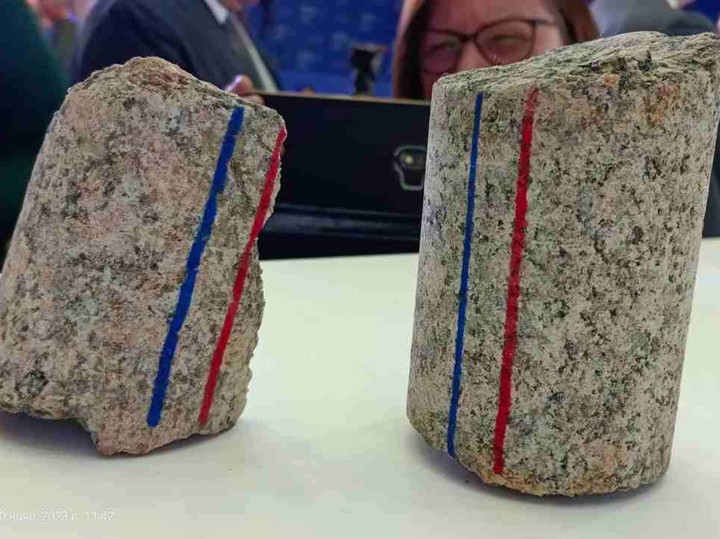Scientific expedition unearthed ancient granite that reveals the secret of evolution
[ad_1]
Unique samples of continental crust, extracted from a depth of 130 meters below the bottom of the Chukchi Sea, were demonstrated to journalists on Friday by employees of the Rosneft company and the non-state development institute Innopraktika. Experts also spoke about other results obtained during a large-scale Arctic expedition carried out this season on two drilling ships.
The Arctic shelf of Russia is one of the few sedimentary basins in the world, for a significant part of which there is no reliable information about the age and properties of the rocks composing it. Specialists from the oil producing company took on the task of eliminating these white spots.
Shelf explorers
The stratigraphic drilling project, covering all the seas of the Arctic basin, has been developed since 2014.
Help “MK”. Stratification is the determination of the age, composition and conditions of formation of geological rocks.
According to the director of the department of scientific and technical development and innovation of Rosneft, Alexander Pashali, the company began with the modernization of the Arctic research fleet and in 2020 carried out the first work on drilling wells in the north of the Kara Sea.

“As we moved towards the Laptev Sea, the East Siberian and Chukchi Seas, we improved drilling technology and expanded the perimeter of cooperation,” says Pashali. – After joining forces with Rosnedra, we retrofitted the vessel, which made it possible to achieve greater depth when drilling wells.
For example, last year, according to the director of the department, a well was drilled on the De Long rise in the East Siberian Sea, which produced valuable core samples.
The 2023 field season was the busiest of all four seasons of the stratigraphic drilling project. Experts explored all the seas of the Russian sector of the Arctic, using two drilling research vessels at once: “Bavenit” and “Kimberlite”. Half of all the core extracted since the beginning of the project was brought to the surface – more than 1000 meters. These are samples of shelf rocks that are now being carefully studied by specialists. The results of analytical studies will make it possible to clarify the forecast for the oil and gas potential of the region, study soil conditions, and also justify the natural continuation of the structures of the Russian shelf in the Arctic Ocean.
“The idea is to drill shallow wells and use them to draw conclusions about the occurrence of target horizons at great depths,” explains Pashali. – The work is unique; no one has done this before.

Help “MK”. Over four field seasons, oil company employees drilled 26 stratigraphic wells at the bottom of the Arctic seas and extracted more than 2 km of core from them.
Antique granite
Rosneft’s drilling program in the Chukchi Sea has produced striking results. This year, samples of granitoids were collected north of Wrangel Island, which is an important research object. The granite sample presented at the briefing was taken at a depth of 130 meters below the bottom – this is the basement, the continental crust of the Chukchi Sea.
Director of Research and Development at Innopraktika Vladimir Lakeev told MK how the extracted core is received at Moscow State University. Lomonosov:
The samples that now lie in front of you were brought to Moscow just two days ago. Now they will be examined as a priority for dating by isotopic composition; biologists will try to find possible microorganisms, plant pollen, and traces of natural radioactivity on the sections. In particular, this will make it possible to understand how the temperature in the Arctic has changed over many thousands of years. We will involve specialists from Moscow State University to study the core. Lomonosov, Institute of Earth Physics RAS, GEOKHI RAS, All-Russian Research Institute of Geology named after. A.P. Karpinsky. They have a long and difficult job ahead of them. The core will be subject to a hundred (!) different research manipulations.

Based on the results of studies of other samples – frozen soil obtained by drilling six wells at once in the Laptev Sea – specialists will be able to confirm or refute various theories of the evolution of the region over the past tens of thousands of years, in particular the one that speaks about the degree of distribution of underwater paleomefrost on the shelf of the northern seas.
Expanding boundaries
However, work this season was not limited to just drilling. As part of one of the expeditions, experimental work on broadband seismic technology was organized.
“Our newest development has no analogues,” says Alexander Pashali. “It allows, through simultaneous sounding of the earth in various radio frequency ranges, to obtain information not only about deep target structures, but also about the bottom part of the shelf, which is important for the construction of wells and offshore structures. Such soundings have already been carried out in the Laptev Sea and in the north of the Barents Sea. The results obtained are unique; they will be of great practical importance and application in the future.
Thus, in 2023, as part of an expedition to the Laptev Sea, using this technology, scientists were able to effectively prepare the location of a future shallow well near the Taimyr Peninsula, aimed at substantiating the external borders of the Russian Federation.
[ad_2]
Source link








